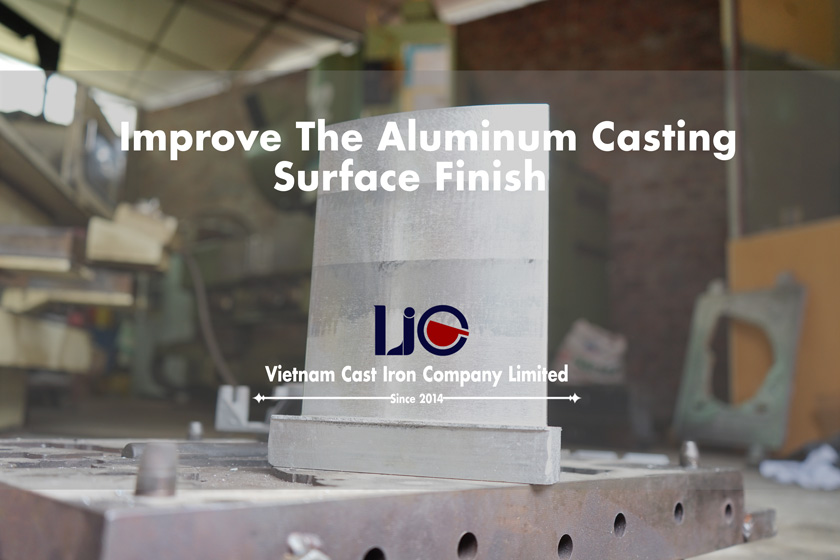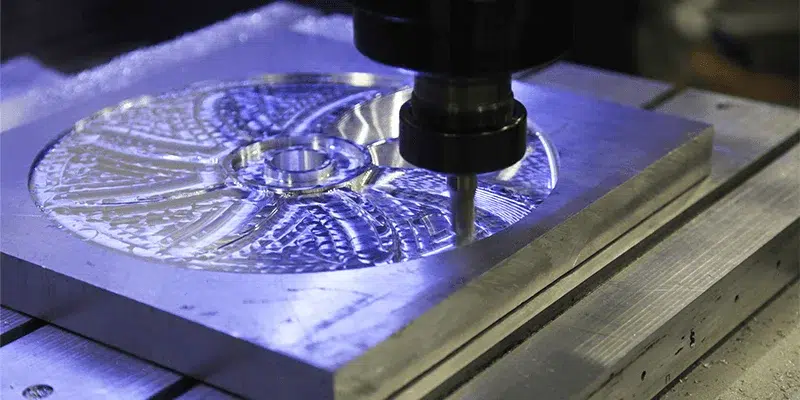Why choose Aluminum Casting over competing processes
Wiki Article
Whatever You Required to Know Regarding the Uses and Conveniences of Aluminum Castings
Aluminum castings play an essential function throughout different industries, providing distinct residential or commercial properties that enhance product efficiency. Their lightweight nature and strength make them excellent for applications in automobile and aerospace sectors. Additionally, the flexibility of casting methods enables intricate styles and limited tolerances. As the demand for sustainable options rises, recognizing the advantages and applications of aluminum castings becomes significantly important. What particular advantages do they provide over various other products?Overview of Aluminum Casting Processes
Aluminum casting procedures encompass a range of techniques used to form liquified aluminum into preferred forms. These methods include sand casting, die casting, and investment casting, each offering unique advantages depending on the application (Aluminum Casting). Sand spreading includes creating a mold from sand, permitting detailed designs and big parts, while die spreading uses high stress to inject molten aluminum into metal molds, ensuring accuracy and smooth surfaces. Investment spreading, additionally understood as lost-wax spreading, generates complex forms with exceptional dimensional precision, making it ideal for thorough elementsThese processes are identified by their ability to produce lightweight, long lasting components that display superb deterioration resistance. The adaptability of aluminum allows for personalization in various sectors, from automobile to aerospace. In addition, the ability to reuse aluminum enhances the sustainability of these casting procedures, minimizing environmental influence while keeping material stability. Comprehending these methods is essential for enhancing production performance and achieving top quality aluminum castings.
Trick Applications of Aluminum Castings
Aluminum castings play a necessary duty throughout various markets, especially in automotive, aerospace, and customer electronics. In the automobile sector, they contribute to light-weight structures that improve gas effectiveness. Similarly, aerospace elements gain from aluminum's strength-to-weight ratio, while consumer electronic devices utilize its convenience for efficient manufacturing.Automotive Market Applications
As the vehicle industry remains to advance, producers significantly depend on aluminum castings for their light-weight yet long lasting buildings. These castings play a vital duty in enhancing vehicle performance, fuel efficiency, and general safety. Trick applications include engine blocks, transmission housings, and structural parts, which benefit from aluminum's excellent strength-to-weight ratio. Furthermore, aluminum castings assist in intricate geometries, enabling for innovative designs that enhance the rules of aerodynamics and minimize drag. The rust resistance of aluminum likewise adds to long life, reducing upkeep prices for both producers and customers. As electric automobiles gain appeal, aluminum castings are necessary for battery units and other elements, additionally solidifying their importance in the future of vehicle manufacturing.Aerospace Component Production
In the aerospace industry, aluminum castings are integral to the manufacturing of light-weight, high-performance components. These castings are essential for manufacturing parts such as engine real estates, structural frames, and touchdown equipment parts, where weight decrease is important for gas effectiveness and total performance. The exceptional strength-to-weight proportion of aluminum permits the development of complex geometries that enhance the rules of aerodynamics. Additionally, aluminum's resistance to corrosion adds to the durability and dependability of aerospace parts, making certain safety and security in trip operations. The spreading process additionally enables accurate tolerances, which is very important in conference rigorous aerospace sector criteria. Overall, aluminum castings play a crucial duty ahead of time aerospace innovation while supporting the sector's press for lasting practices.Customer Electronics Manufacturing
The use of aluminum castings in customer electronics manufacturing has actually become increasingly significant because of their lightweight and long lasting residential or commercial properties. Producers leverage these castings to create components for different tools, consisting of mobile phones, laptop computers, and pc gaming consoles. Aluminum's superb thermal conductivity additionally helps in warm dissipation, improving tool efficiency and long life. The versatility of aluminum permits for complex styles and complex geometries, making it possible for smooth and modern aesthetics that appeal to customers. Furthermore, aluminum castings can be easily reused, lining up with the growing need for sustainable manufacturing methods. As technology breakthroughs, the function of aluminum castings in developing cutting-edge and effective customer electronics is anticipated to broaden, making them a staple in the industry.
Benefits of Using Aluminum Castings
While numerous materials are offered for casting, aluminum sticks out due to its special combination of lightweight buildings, strength, and deterioration resistance. The low density of aluminum makes it a perfect selection for applications where weight reduction is important, such as in the vehicle and aerospace industries. Its superb strength-to-weight ratio allows producers to produce sturdy parts without adding too much weight.Furthermore, aluminum castings can be produced with detailed layouts and tight resistances, making it possible for intricate geometries that are tough to attain with other materials. The versatility of aluminum permits for different casting methods, consisting of sand, pass away, and investment casting, dealing with varied manufacturing demands. Aluminum's simplicity of machining and finishing enhances its allure, helping with the production of top quality surface area coatings. On the whole, the benefits of using aluminum castings add to enhanced performance and efficiency in numerous applications throughout different industries.
Rust Resistance in Aluminum Castings

All-natural Oxide Layer
A natural oxide layer kinds on the surface area of aluminum castings, offering a vital obstacle against ecological variables that can cause wear and tear. This slim, safety movie is an outcome of the aluminum's reaction with oxygen airborne, effectively shielding the underlying steel from dampness, chemicals, and contaminants. Therefore, aluminum castings display impressive rust resistance, which boosts their long life and resilience in numerous applications. The oxide layer is not only valuable for security yet likewise adds to aesthetic high qualities, as it can establish a matte surface that several industries like. Additionally, this all-natural procedure minimizes the requirement for additional coverings, making aluminum castings an affordable choice for suppliers seeking trustworthy, long-lasting materials.Alloy Variations Effect
The make-up of aluminum alloys greatly influences their rust resistance homes in castings. Various alloy variants, such as 1xxx, 2xxx, and 6xxx series, exhibit unique degrees of sensitivity to rust. 1xxx alloys, primarily composed of pure aluminum, offer exceptional deterioration resistance due to their high pureness. On the other hand, 2xxx alloys, which have copper, may experience substantial rust when revealed to rough atmospheres. On the other hand, 6xxx alloys, integrating magnesium and silicon, strike an equilibrium between strength and resistance. The existence of alloying aspects can enhance or decrease safety oxide layers, eventually influencing long life and efficiency. Comprehending these variations is vital for choosing the best alloy for particular applications where corrosion resistance is important.Design Versatility and Modification
Various products exist for casting applications, aluminum stands out due to its exceptional design flexibility and possibility for modification. This versatility allows designers and engineers to develop detailed shapes and forms that fulfill certain useful demands. Aluminum Casting. The low thickness of aluminum allows lightweight layouts, which is specifically valuable in industries such as automotive and aerospace, where weight reduction is vitalAluminum castings can be tailored to numerous specs, including wall surface thickness, surface coating, and dimensional tolerances. This flexibility not just boosts the visual allure however also improves the performance of the final item. Additionally, progressed strategies such as 3D printing and computer-aided layout (CAD) more promote the personalization process, allowing fast prototyping and decreasing preparations. As a result, aluminum castings can successfully fulfill the diverse requirements of various markets while using manufacturers the capacity to introduce and respond swiftly to market demands.
Comparison With Various Other Casting Products
While various casting materials each have their distinct advantages, aluminum constantly demonstrates remarkable homes that make it a recommended selection in several applications. Compared to iron and steel, aluminum is considerably lighter, which decreases the total weight of finished products, enhancing fuel performance in automobile and aerospace sectors. Additionally, aluminum uses exceptional corrosion resistance, requiring less maintenance over time compared to products like iron, which can corrosion.When compared with plastics, aluminum's stamina and toughness exceed lots of synthetic options, making it ideal for requiring settings. Furthermore, aluminum's thermal and electrical conductivity is remarkably more than the majority of various other steels, making it suitable for applications needing reliable warm dissipation or electric components.

Future Trends in Aluminum Casting Technology
Innovations in aluminum casting innovation are set to redefine its applications across various industries. Developments in automation and robotics are simplifying production processes, boosting performance and accuracy. The combination of artificial intelligence and artificial intelligence enables real-time monitoring and anticipating maintenance, decreasing downtime and boosting quality assurance.The advancement of advanced alloys is expanding the performance capabilities of aluminum castings, making them appropriate for even more demanding applications, specifically in auto and aerospace sectors. Sustainable practices are likewise gaining grip, with enhanced focus on recycling aluminum and reducing carbon impacts during manufacturing.
Additive manufacturing methods, such as 3D printing, are being checked out to produce complicated geometries that standard techniques can not attain, permitting for better layout adaptability. These fads suggest a future where aluminum spreading will not just fulfill however go beyond sector assumptions, driving development and sustainability in production.
Frequently Asked Questions
Just How Are Aluminum Castings Recycled After Usage?
Aluminum castings are commonly accumulated, cleaned up, and processed in recycling centers. The product is melted down, improved, and afterwards reformed right into brand-new products, thus preserving sources and decreasing ecological effect while preserving aluminum's desirable residential or commercial properties.What Are the Normal Prices Related To Aluminum Castings?
The regular costs related to aluminum castings differ based upon factors such as complexity, volume, and material specs. Usually, prices range from a few dollars per pound to substantially higher quantities for intricate designs and large quantities.Exactly How Do Aluminum Castings Contrast in Weight to Steel Castings?
Aluminum castings evaluate substantially much less than steel castings, typically around one-third the weight (Aluminum Casting). This reduced mass enables for much easier handling, transport, and application in different markets, adding to boosted performance in style and manufacturing proceduresWhat Industries Primarily Depend On Aluminum Castings?
Numerous sectors significantly count on aluminum castings, including Aluminum Casting automobile, aerospace, electronics, and customer items. Their lightweight nature, rust resistance, and versatility make them important for manufacturing components in these markets, boosting performance and effectiveness.Exist Any Kind Of Health Dangers Connected With Aluminum Casting Processes?
Health threats connected with aluminum spreading processes consist of direct exposure to fumes, dirt, and chemicals, which can result in respiratory problems and skin irritability. Proper safety procedures and equipment are necessary to minimize these possible dangers in the work environment.Report this wiki page